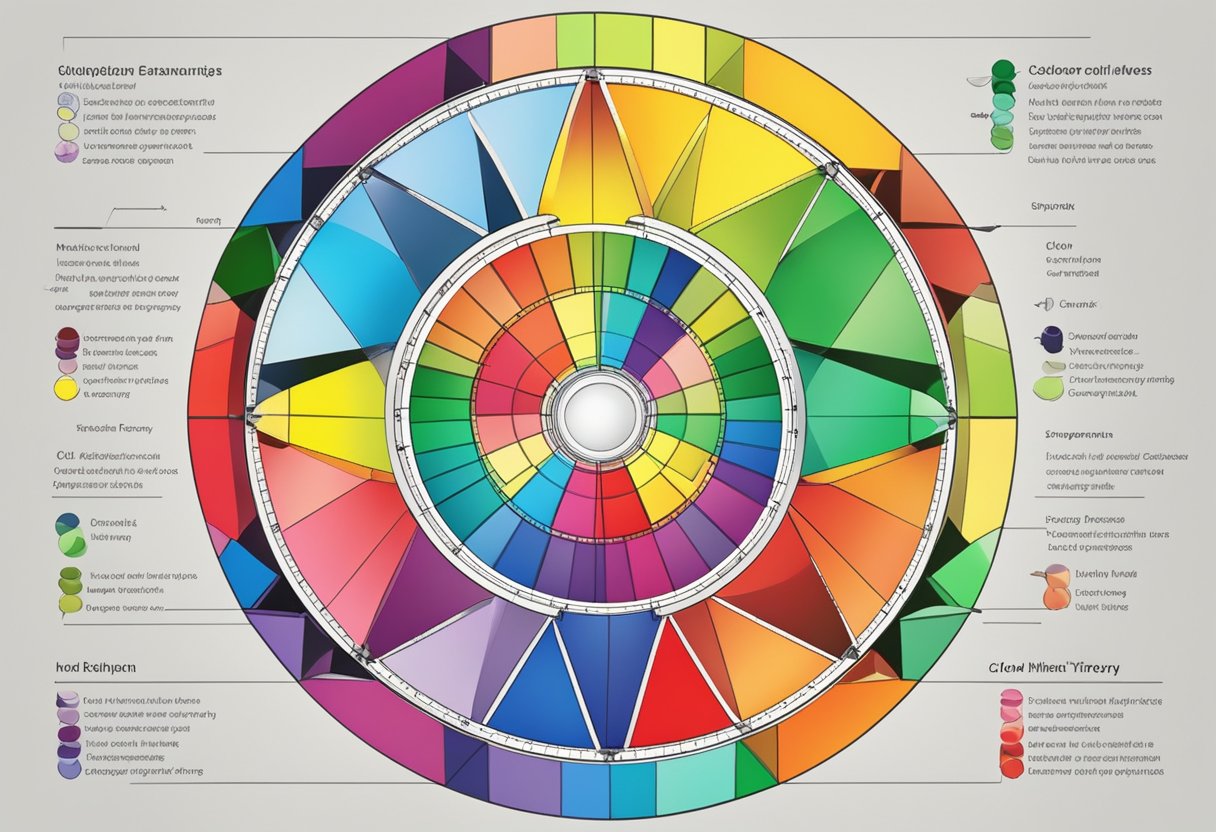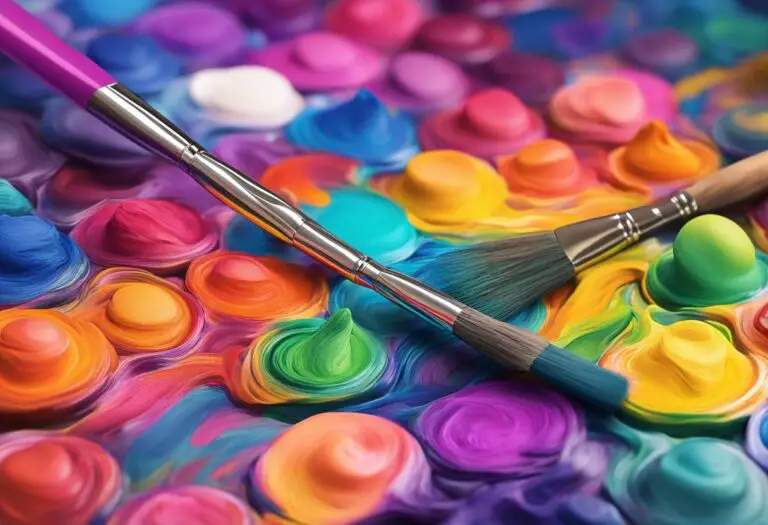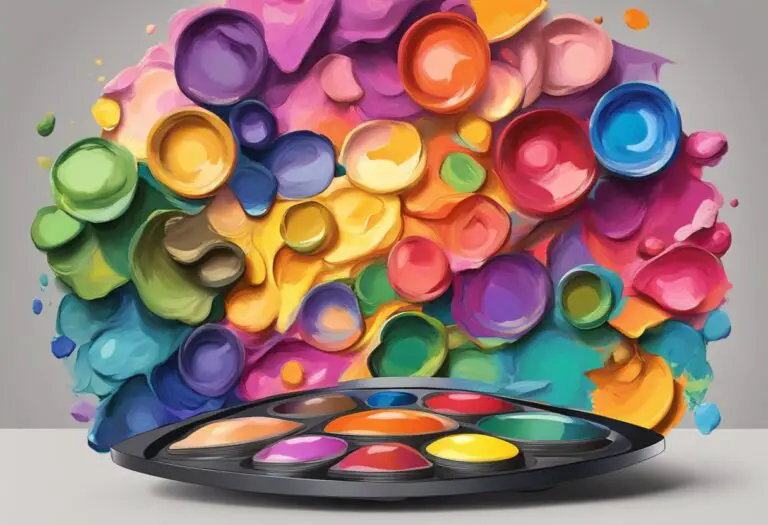Perfect Complementary Painting Colors Guide
Welcome to the Perfect Complementary Painting Colors Guide, where we will explore the fascinating world of color and its transformative power in interior design and home decor. Choosing the right colors can make all the difference in creating a harmonious and visually stunning space. By understanding the principles of the color wheel and color theory, you can confidently select complementary painting colors that will bring your vision to life.
Whether you are planning a complete room makeover or simply refreshing your current color scheme, this guide will provide you with the knowledge and inspiration to make informed decisions. We will delve into the concept of complementary colors, explore their relationship on the color wheel, and showcase how they can be effectively combined to create breathtaking color schemes.
Discover the secrets of using accent colors to enhance your complementary painting colors and learn how to strike the perfect balance with neutrals. We will also discuss the application of complementary painting colors in different rooms, highlighting their impact on the overall ambiance. Additionally, we will explore how coordinating complementary elements in furniture, accessories, fabrics, and artwork can elevate your home decor to new heights.
Whether you are a seasoned interior design enthusiast or embarking on your first home decor project, this guide has something for everyone. It’s time to unlock the potential of complementary painting colors and transform your living spaces into extraordinary works of art.
Understanding the Color Wheel and Color Theory
In the world of interior design and painting, understanding the color wheel and color theory is essential for creating harmonious and visually appealing spaces. The color wheel is a visual representation of how colors relate to each other, helping us choose the right colors that complement each other.
The color wheel consists of primary, secondary, and tertiary colors. The primary colors are red, blue, and yellow. These colors cannot be created by mixing other colors and form the foundation for all other colors on the wheel. When combined, they create secondary colors: orange, green, and violet. Secondary colors are obtained by mixing two primary colors together.
Tertiary colors are formed by mixing a primary color with a secondary color adjacent to it on the color wheel. For example, mixing blue with green creates a blue-green tertiary color.
The color wheel allows us to see the relationships between colors, helping us create harmonious color schemes. The concept of complementary colors is particularly important. Complementary colors are located opposite each other on the color wheel. When used together, they create a vibrant contrast and enhance each other’s intensity.
In color theory, complementary colors are considered to be opposites. For example, red and green, blue and orange, and yellow and purple are complementary pairs. Combining these colors can create dynamic and visually striking compositions.:
| Primary Color | Complementary Color |
|---|---|
| Red | Green |
| Blue | Orange |
| Yellow | Purple |
Understanding the color wheel and color theory allows us to make informed choices in interior design and painting. By utilizing complementary painting colors effectively, we can create visually appealing color schemes that elevate the overall look and feel of a space.
Choosing Complementary Colors for Interior Design

When it comes to interior design, selecting the right colors is crucial in creating a visually appealing and harmonious space. Choosing complementary painting colors can enhance the overall aesthetic and provide a cohesive color scheme throughout your home.
To begin, it’s essential to understand the concept of complementary colors. Complementary colors are hues that sit opposite each other on the color wheel. Pairing these colors together can create a dynamic contrast that adds interest and depth to a room.
One way to choose complementary colors is to refer to the color wheel and identify pairs that catch your eye. For example, if you want to create a bold and vibrant color scheme, you could pair a cool blue with a warm orange. On the other hand, if you prefer a more subtle and calming ambiance, a soft green paired with a muted pink might be a better choice.
Tip: Consider the mood you want to create in each room when selecting complementary colors. Play around with different combinations to find the right balance between energy and tranquility.
When selecting complementary colors, it’s important to consider the existing elements in the room, such as furniture, flooring, and artwork. These elements can serve as inspiration for your color scheme and help guide your choices.
Another approach is to look for inspiration in nature. Nature provides endless combinations of complementary colors that can be translated into your interior design. For example, the vibrant greens and purples found in a garden can inspire a lively and refreshing color scheme for a living room.
To help you visualize and experiment with different color combinations, creating a mood board or using online design tools can be incredibly helpful. These resources allow you to see how different colors interact and how they can be incorporated into your overall design.
Remember, when choosing complementary colors for interior design, it’s important to strike a balance. The colors should work together to create a visually pleasing and cohesive space, while also reflecting your personal style and preferences.
| Complementary Color Pair | Color Example |
|---|---|
| Blue and Orange | |
| Purple and Yellow | |
| Green and Red |
As you can see in the examples above, complementary colors can create a captivating and eye-catching color scheme when applied appropriately. By understanding the color wheel, considering existing elements in the room, and taking inspiration from nature, you can confidently choose complementary colors that elevate your interior design.
Creating Harmonious Color Schemes with Complementary Colors
Creating a harmonious color scheme is crucial for achieving a visually stunning and well-designed space. One effective way to accomplish this is by utilizing complementary colors. Complementary painting colors are pairs of hues that are opposite each other on the color wheel. When combined, they create a dynamic and balanced look that can bring depth and dimension to any room.
Understanding how to use complementary colors is key to achieving a harmonious color scheme. By strategically combining these hues, you can create a visually pleasing and cohesive look that enhances the overall ambiance of your space.
Here are a few tips on how to create harmonious color schemes using complementary colors:
- Choose a dominant color: Start by selecting one color from the complementary pair to serve as the dominant color. This color will be the main hue used in the majority of your space, such as on the walls or larger furniture pieces.
- Use the complementary color as an accent: The other color from the complementary pair can be used as an accent color to add pops of interest and create visual contrast. This can be done through accessories, artwork, or smaller furniture pieces.
- Consider the color intensity: Pay attention to the intensity of the colors you choose. Pairing a highly saturated hue with a softer, more subdued color can create a balanced and visually pleasing combination.
- Experiment with different shades: Don’t be afraid to explore different shades and tones of the complementary colors. This can add depth and variety to your color scheme while maintaining the harmonious balance.
By following these tips and experimenting with complementary color combinations, you can create a harmonious and visually striking color scheme that elevates your home decor. Whether you’re aiming for a bold and vibrant look or a more subtle and sophisticated ambiance, complementary painting colors offer endless possibilities for creating a harmonious space.
Using Accent Colors to Enhance Complementary Painting Colors
When it comes to creating a visually appealing color scheme, accent colors play a crucial role in enhancing the beauty and impact of complementary painting colors. By strategically incorporating accent colors, you can bring depth and interest to your color scheme while maintaining overall harmony in your interior design.
Accent colors are secondary hues that are used sparingly to create emphasis and draw attention to specific elements or areas in a room. They provide a visual contrast to the dominant complementary painting colors and help create a balanced and visually pleasing environment.
One way to use accent colors effectively is by using them to highlight architectural details or focal points in a space. For example, if your primary complementary painting colors are shades of blue and orange, you can introduce a pop of vibrant yellow as an accent color to draw attention to a beautiful fireplace or a unique architectural feature.
Another way to incorporate accent colors is by adding them through accessories such as throw pillows, artwork, or curtains. These small but impactful elements can bring personality and visual interest to your color scheme. For instance, if your primary complementary painting colors are green and red, you can add accent colors like gold or metallic silver to complement the overall color scheme and create a luxurious atmosphere.
When selecting accent colors, it’s important to consider the overall mood and ambiance you want to achieve. Experiment with different shades and tones to find the perfect balance between your complementary painting colors and the accents. This will help create a cohesive and visually stunning color scheme in your interior design.
Remember, accent colors should be used strategically and sparingly. Avoid overwhelming your space with too many contrasting hues. Instead, focus on selecting a few accent colors that complement your complementary painting colors and enhance the overall aesthetic of your home decor.
Applying Complementary Painting Colors in Different Rooms
When it comes to interior design, choosing the right colors can make all the difference in creating a cohesive and visually appealing space. By understanding the principles of complementary painting colors and how they interact with each other, you can transform any room into a harmonious sanctuary that reflects your personal style.
Each room has its own unique purpose and ambiance, and the application of complementary painting colors should be tailored accordingly. By considering the function of the room and the desired mood, you can select the perfect color scheme to enhance the overall aesthetic.
Bedrooms
In the bedroom, it’s important to create a tranquil and relaxing environment. Soft, soothing hues like light blues, greens, or lavender can promote a sense of calmness and serenity. To add depth and contrast, consider using the complementary colors of these shades as accents – for example, a pop of coral against a soft blue backdrop can create a visually striking effect.
Living Rooms
The living room is typically the heart of the home, where family and friends gather for relaxation and entertainment. To create a warm and inviting atmosphere, earthy tones like browns, oranges, and yellows can be paired with their complementary colors, such as shades of blue or green. This combination can bring balance and harmony while adding visual interest to the space.
Kitchens
The kitchen is a space of creativity and culinary exploration. Neutral colors like whites, grays, or beiges can provide a clean and timeless backdrop. To inject vibrancy and personality, complementary accents in bold and energetic colors like red, teal, or mustard can be incorporated through appliances, decor, or even a feature wall.
Other Areas
Each room in the house has its own purpose and character, and applying complementary painting colors can enhance these unique qualities. For example, in a home office, cool blues and greens can promote productivity and concentration. In a children’s playroom, bright and vibrant colors like reds and yellows can stimulate creativity and energy.
Remember, the key to successfully applying complementary painting colors in different rooms is balance and coordination. By selecting hues that work together harmoniously, you can create a visually stunning space that reflects your individual style and enhances the overall ambiance.
Beyond Wall Colors: Exploring Complementary Elements
When it comes to interior design and home decor, complementary painting colors extend beyond the walls. Furniture, accessories, fabrics, and artwork play a vital role in creating a cohesive and visually appealing space that reflects your personal style. The use of complementary colors in these elements can bring harmony and balance to your home.
Coordinating colors throughout your space is key to achieving a cohesive look. By selecting furniture pieces, such as sofas, chairs, and tables, that complement the wall colors, you can create a harmonious flow that ties the entire room together. For example, if you have chosen a cool-tone wall color like a light blue, consider pairing it with furniture in complementary warm tones such as mustard yellow or burnt orange.
Accessories are another way to incorporate complementary colors into your home decor. Throw pillows, rugs, curtains, and other decorative items can add pops of color and create visual interest. For instance, if you have neutral-colored furniture, you can use throw pillows in a complementary color to make a bold statement. This will not only add visual appeal but also create a sense of balance in the overall color scheme.
Fabrics also play a significant role in enhancing complementary painting colors. You can choose curtains, upholstery, and bedding in complementary colors to create a coordinated look. For example, if you have a deep green accent wall, consider using curtains or upholstery in a complementary shade like blush pink or creamy beige. This will create a pleasing contrast while maintaining a cohesive color scheme.
Artwork is another fantastic way to incorporate complementary colors into your home decor. Whether it’s a painting, photograph, or sculpture, artwork can become a focal point in any room. Choose pieces that feature complementary colors to create a stunning visual impact. For example, a vibrant blue artwork can be the perfect complement to a room with warm neutral tones.
Quotes:
“The use of complementary colors in furniture, accessories, fabrics, and artwork is a powerful tool in creating a cohesive and visually appealing space.” – Interior Design Expert
“Coordinating colors throughout your home not only adds visual harmony but also creates a sense of unity and balance.” – Home Decor Specialist
Examples of Complementary Elements in Home Decor
| Element | Complementary Color |
|---|---|
| Sofa | Accent pillows in a complementary color |
| Bedroom | Bedding in a complementary color |
| Living Room | Rug in a complementary color |
| Artwork | Frame in a complementary color |
Balancing Neutrals with Complementary Painting Colors
When it comes to creating a stunning color scheme for your home decor, finding the right balance between neutrals and complementary painting colors is essential. Neutrals act as the foundation, providing a cohesive backdrop that allows the complementary colors to shine. This section will provide valuable insights on how to incorporate neutrals effectively, ensuring a harmonious and visually appealing result.
Understanding the Power of Neutrals
Neutrals, such as whites, grays, and beiges, are versatile shades that effortlessly blend with a wide range of colors. They bring balance, elegance, and sophistication to a space, serving as a calming influence amidst the vibrancy of complementary painting colors. Neutrals provide visual relief, preventing the room from feeling overwhelming or chaotic.
“The strategic use of neutrals creates a sense of cohesion and allows the eye to focus on the complementary colors, making them more impactful and visually striking.” – Interior Design Expert
Incorporating neutrals in large areas, such as walls or flooring, creates a neutral canvas where the complementary colors can take center stage. By doing so, you ensure that the overall color scheme remains visually pleasing and harmonious, without overwhelming the space.
Choosing the Right Neutrals
When selecting neutrals for your color scheme, consider the undertones that exist within the complementary painting colors. Warm neutrals, like beige or cream, work well with warm-toned complementary colors, creating a cozy and inviting atmosphere. On the other hand, cool neutrals, such as gray or white, pair beautifully with cool-toned complementary colors, adding a touch of elegance and modernity to the space.
It’s important to note that not all neutrals are created equal. Different shades of white, for example, can have undertones of yellow, pink, or blue. Pay attention to these subtle variations to ensure that the neutrals you choose harmonize well with the rest of the color scheme.
Striking the Right Balance
Creating a balanced color scheme involves finding the perfect equilibrium between neutrals and complementary painting colors. The key is to use neutrals as the dominant base, allowing the complementary colors to take on supporting roles.
Consider using neutrals for larger surfaces, such as walls, ceilings, and flooring, to provide a solid foundation for the room. Then, incorporate complementary colors through furniture, accessories, and artwork, adding pops of vibrancy and visual interest.
Remember, achieving balance doesn’t necessarily mean using equal amounts of neutrals and complementary colors. It’s about finding a harmonious composition where neither element overpowers the other.
Visual Inspiration: Balancing Neutrals and Complementary Colors
| Neutral Base | Complementary Accents |
|---|---|
|
|
In the example above, the neutral base creates a calm and cohesive backdrop for the complementary accents. The vibrant blue accent wall becomes the focal point, while the orange pillows and curtains, as well as the green artwork, add pops of complementary color throughout the space.
By striking the right balance between neutrals and complementary painting colors, you can achieve a visually stunning and harmonious color scheme for your home decor. The interplay between these elements will create a space that exudes style, elegance, and personality.
Experimenting with Complementary Painting Colors
When it comes to interior design, exploring different color combinations can add a touch of excitement and creativity to your home decor. Experimenting with complementary painting colors allows you to break away from traditional color schemes and infuse your personal style into your living space. It’s a chance to step out of your comfort zone and create a unique ambiance that reflects your personality.
One way to start experimenting with complementary painting colors is by selecting a dominant color from the complementary pair and using it as the base for your room. For example, if you have a blue and orange complementary palette, you can choose shades of blue as the primary color for the walls, furniture, and textiles. Then, incorporate pops of orange in decorative accents, such as throw pillows, artwork, or vases. This approach allows you to maintain a cohesive look while adding a bold touch.
Another way to experiment is by embracing unconventional pairings. Don’t be afraid to combine colors that are not typically considered complementary. Mixing unexpected hues can result in a surprising and visually stunning room. For instance, pairing a deep purple with a muted yellow can create a striking contrast that adds depth and interest to your space.
Remember, the key to successful experimentation is balance. While it’s important to explore new color combinations, it’s also crucial to maintain harmony within your overall color scheme. To achieve this, consider using complementary colors as accents rather than dominating the entire room. This allows you to create a focal point while still maintaining a cohesive and visually appealing space.
To inspire your experimentation, here are a few color combinations that you can try:
| Complementary Color Combination | Description |
|---|---|
| Coral and Mint Green | A vibrant and refreshing pairing that brings a subtle tropical vibe to any room. |
| Deep Magenta and Golden Yellow | A dramatic and luxurious combination that adds warmth and sophistication to your space. |
| Steel Blue and Tomato Red | A bold and energetic pairing that creates a modern and vibrant atmosphere. |
Experimenting with complementary painting colors allows you to unleash your creativity and make a bold statement in your interior design. Don’t be afraid to mix and match different hues to find the perfect color combinations that resonate with your style and personality. So, go ahead and explore the endless possibilities that complementary colors have to offer!
Conclusion
Throughout this guide on complementary painting colors, we have explored the importance of considering color theory and the color wheel in interior design. By understanding how complementary colors interact with each other, homeowners can create a harmonious and visually appealing home decor.
Choosing complementary colors for interior design allows for the creation of striking color schemes that capture attention and evoke certain moods. The color wheel serves as a valuable tool in identifying colors that work well together, whether they are warm and cool tones or shades from opposite ends of the spectrum.
By incorporating complementary painting colors strategically in different rooms, homeowners can enhance the ambiance and create a cohesive atmosphere throughout their living spaces. From bedrooms to kitchens, the right color choices can transform a room into a personal sanctuary or a vibrant gathering place.
Remember, interior design goes beyond wall colors. Coordinating other complementary elements such as furniture, accessories, fabrics, and artwork can greatly contribute to the overall aesthetic appeal. Balancing neutrals with complementary painting colors also adds depth and allows the colors to shine.
With the knowledge gained from this guide, homeowners can experiment confidently and step outside their comfort zone when it comes to color combinations. By infusing their homes with complementary painting colors, they can create spaces that reflect their personality and make a lasting impression on guests.







